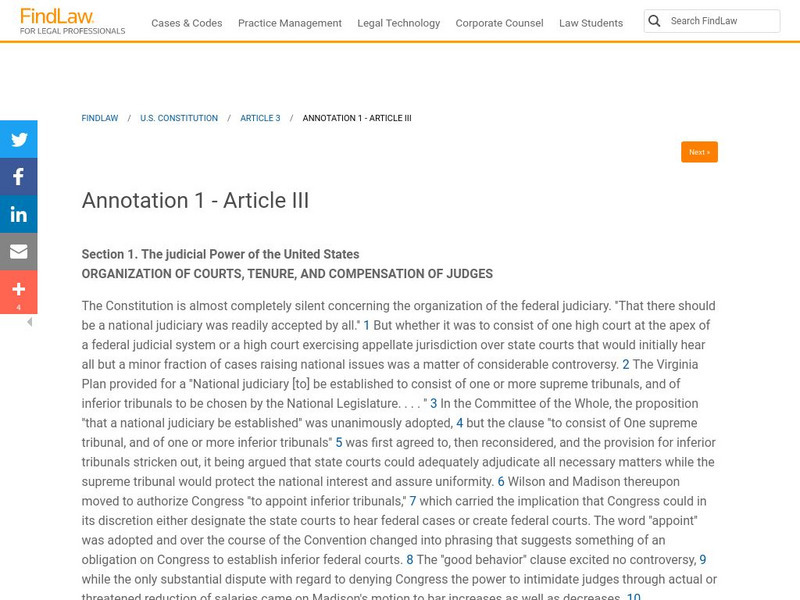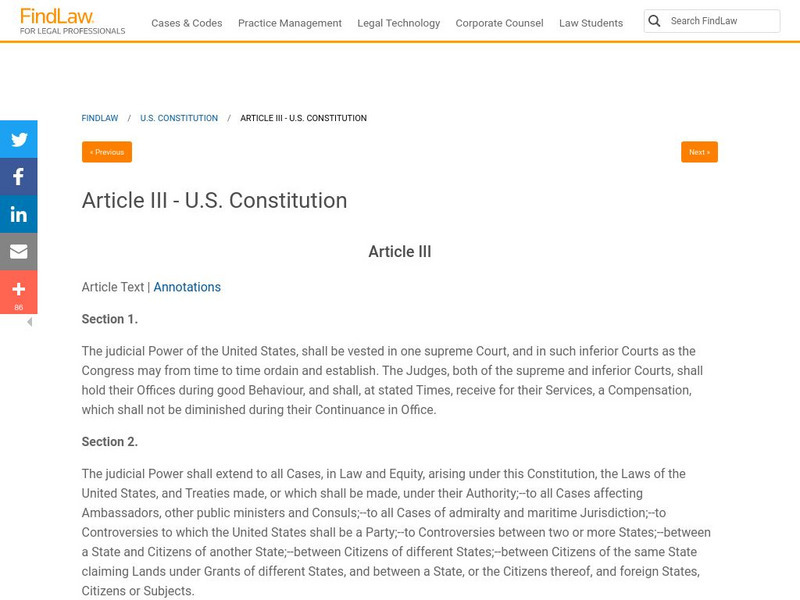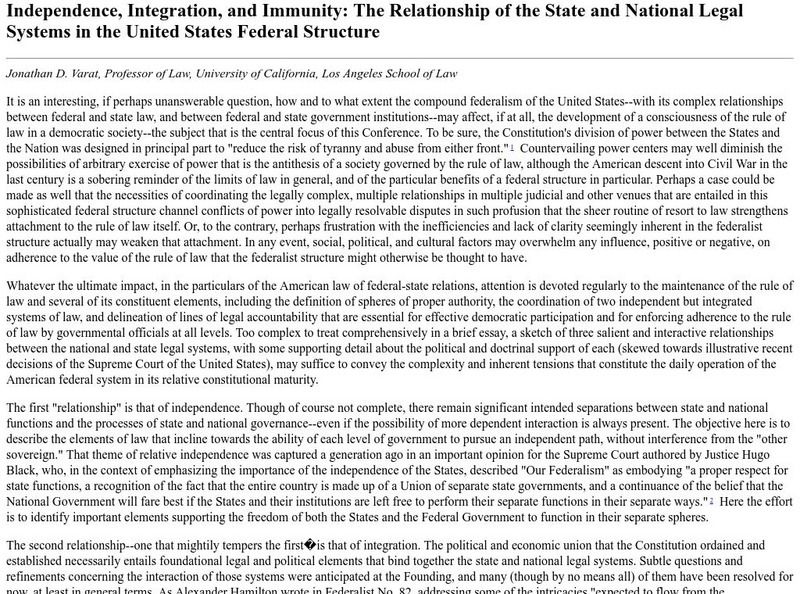Curated OER
What is Due Process Anyway?
High schoolers examine the term due process and its historical origins. They compare and constrast the requirements of due process in the United States Constitution and the Indiana Constitution. They also discuss the difference between...
Curated OER
The Changing Meaning of "Due Process"
Students examine the United States Constitution and how the application for due process differs in two amendments. They research the changing definition of the term since the Civil War. They use the internet to research press coverage of...
Curated OER
Courts in the Classroom: Ritter v Stanton
Young scholars read the case briefs of Ritter v Stanton. They simulate the trial with classmates taking various parts such as appellant, appellee, bailiff, and justices. After conducting a mock argument, they write their own opinion for...
Curated OER
Oral Arguments Online
Students participate in their own mock oral arguments. They create their own opinions and discuss any opposing opinions. They write their own opinion for a case to end the lesson.
Curated OER
Can I Have a Jury Trial?
Students examine the difference between a jury trial and a bench trial. They discuss any protections that the Indiana and United States Constitution offers its citizens. They use the internet to research any current press of jury trials.
Curated OER
Ira Ritter, Et Al., V. Jerry And Ruth Stanton Lesson 2: What Does a Jury Do Anyway?
Students investigate how a jury is chosen, and what the rights and responsibilities of juries are. They examine case studies to determine the role of the jury in both criminal and civil cases.
Curated OER
Perspectives on Civil Rights
Students examine speeches of the Civil Rights Era. In this American history lesson, students listen to speeches delivered by Martin Luther King, Jr. and John F. Kennedy. Students respond to guiding questions as they listen to the...
Thomson Reuters
Find Law: Article Iii: Organizations of Court, Tenure, & Compensation
This resource covers Article III, Section 1, which focuses on the judicial branch of the United States government.
Thomson Reuters
Find Law: Article Iii: Judicial Power
Annotations to Article III on the characteristics and attributes of judicial power as related to specific Supreme Court decisions. The author distinguishes between judicial power and jurisdiction.
Center For Civic Education
Center for Civic Education: Relationship of State and National Legal Systems
This lengthy essay describes the balance between state and federal judiciary courts and touches on independence, integration, power limits and immunities.
Other
Federal Judicial Center: What the Federal Courts Do
U.S. government-sponsored site that provides excellent information on the distinction between civil law and criminal law. It is part of a larger website that is dedicated to explaining the workings of the federal judicial system....
Other
Constitutional Court or Spain: Tribunal Constitucional
The Constitutional Tribunal is a part of the Judicial Branch of the government. This Tribunal oversees that the political leaders and the laws uphold the Constitution of Bolivia. The website provides brief information about the number of...
Wikimedia
Wikipedia: Federal Judiciary of the United States
This Wikipedia entry on the Federal government of the United States gives detailed information on each aspect of the judiciary branch.












